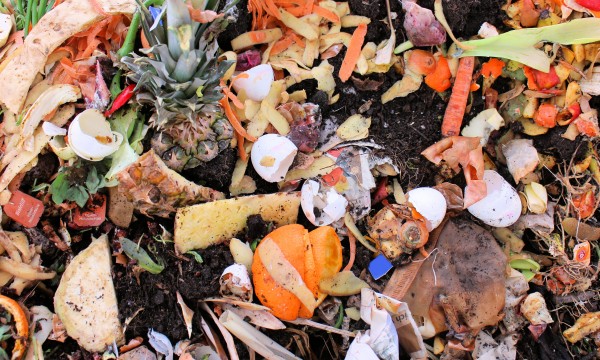Composting is a relatively easy way to supplement garden soil using organic materials you might throw away. Before these handy ingredients are ready to feed hungry tomato plants or rose bushes, they need to be deconstructed with a little help from nature. Like a casserole fresh from the oven, homemade compost makes for a great meal if you're a hungry plant or shrub. Let's review some basic composting concepts and explore 20 unexpected household materials you can add to your compost pile.
- Browse Categories
- All Tips
-
Home & Garden
- All
- Appliances
- Bathroom
- Cleaning
- Crafts
- Decorating
- Electrical
- Flooring
- Furniture
- Garage Door
- Gardening
- Green Living
- Heating
- Home Alarm Systems
- Home Maintenance
- Home Remedies
- Home Security
- Home Staging
- House Sitting
- Junk Removal
- Kitchen
- Lawn Care
- Lock Systems
- Moving
- Outdoor Living
- Pest Control
- Plumbing
- Renovation
- Roofing
- Snow Removal
- Storage
- Tools
- Tree Service
- Health
- Family
- Travel
- Auto
- More Tips
Your account is now active!

20 unexpected things you can compost
November 3, 2015

1. Composting basics
- The soil most plants need to flourish contains decomposed organic matter called humus, as well as clay, sand and silt in nearly equal amounts.
- Composting is the art of creating rich humus with the help of organic material, moisture, good air flow, beneficial insects and benign microorganisms.
- This may sound like a lot to manage, but the process is really pretty easy. The trick to a well-constructed compost pile is in getting the "recipe" right.
- With a good mix of organic ingredients, compost will be make for great plant food; a rich mound of humus that's crumbly, cool, moist and dark in colour.
- Successful compost enthusiasts usually separate ingredients into two broad types, brown (carbon rich) and green (nitrogen rich). Brown ingredients include fallen leaves, hay, wood shavings and straw.
- Green ingredients include lawn trimmings, high nitrogen fertiliser, steer or chicken manure and kitchen scraps.
- Each type, brown or green, should represent about 50 per cent of the pile. This hastens decomposition, a necessary part of composting.
- With a layer of soil on top, regular watering and occasional turning for proper aeration, a four-foot high compost pile can be ready to use in the garden in as little as a month or two.
2. Can you really compost that?
Used in small quantities, it's possible to use lots of different types of ingredients in compost prep. Although most household composting materials fall into the green category, some may surprise you. Below are 20 of the more interesting materials:
- Bamboo skewers -- Yes, they will break down.
- Cardboard food boxes -- Cardboard is a wood product made from cellulose.
- Christmas trees -- After processing through a chipper, of course.
- Cotton balls
- Cotton fabric -- Make sure the item is 100 percent cotton, and cut fabric into one-inch strips for faster decomposition.
- Discarded loofah sponges and mitts
- Dryer lint -- Yes! Finally a use for dryer lint.
- Egg shells
- Feathers
- Fireplace ashes
- Hair -- Clean your hairbrush right into the compost bin.
- Latex balloons -- Latex is a biodegradable rubber material.
- Mouldy cheese
- Old potpourri
- Pet fur
- Raffia ribbon -- Raffia is made from palm leaves.
- Shrimp, crab or lobster shells
- Used coffee grounds and the filters
- Vacuum cleaner bag contents
- Wine corks -- Cork is actually the bark of a variety of oak tree.
National advertising powered by Mediative.com. Yellow PagesTM, Walking Fingers & DesignTM, YP.caTM, Find. & DesignTM, YellowPages.caTM, Canada411TM and YP ShopwiseTM are trademarks of Yellow Pages Digital & Media Solutions Limited in Canada. All other trademarks are the property of their respective owners. Copyright © 2018 Yellow Pages Digital & Media Solutions Limited. All Rights Reserved.
More Tips
The material on this website is provided for entertainment, informational and educational purposes only and should never act as a substitute to the advice of an applicable professional. Use of this website is subject to our terms of use and privacy policy.






